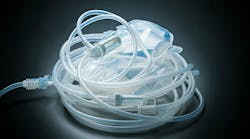Three-dimensional (3D) printing technology, also known as additive manufacturing, is highly innovative and has the potential to be widely used across many different fields. The technology offers enormous possibilities for pharmaceutical production, from providing personalized medication to speeding up the drug discovery process.
3D technology provides options for altering pill shapes, dosing flexibility, improving solubility, and producing many tablets with various active medicinal components. Delivering customized, tiny batches in the clinical trials sector has immense potential. 3D-printed tablets, which may be made on demand in local health care settings, could help usher in a new era of individualized treatment in the field of patient-centered medicine.
3D technology has been rapidly growing in popularity, and it is expected to bring about significant changes in the way medical care is provided, particularly in the manufacturing of personalized medicine. However, in order to grasp this new universe of opportunity, a greater comprehension of the materials, processes and techniques will be required.
Personalized medicine
Personalized medicine involves creating medication tailored to individual patients based on their unique physiology, drug response and genetic profile. Several technologies are emerging to help the industry move away from the traditional ‘one-size-fits-all’ approach towards personalized medicine, with 3D printing being the most significant.
3D printing involves creating a three-dimensional object layer by layer using computer software. It has the ability to construct various pharmaceutical dosage forms with different shapes, release profiles and drug combinations. Recently, the technology became more complex, allowing different drugs to be combined in one tablet with different release profiles tailored to a patient’s needs.
Intradermal drug delivery
The delivery of medications into skin layers in a minimally invasive manner is called intradermal (ID) drug delivery. These treatments usually focus on the epidermal or dermal layers that are above the nerve fibers and blood vessels of the skin. Compared to intravenous injection, ID drug delivery is a preferable choice as it can provide targeted, local drug delivery without causing systemic effects. One of the main benefits of ID drug delivery is its ability to administer compounds that have a significant first-pass effect or undergo metabolization by the liver.
The ID space has been investigated as a way to deliver drugs and perform diagnostics with minimal invasiveness. Microneedles, microneedle patches and microarray patches (MAPs) use tiny projections that can painlessly penetrate the skin to access the epidermal/dermal layer. Surprisingly, MAPs have not reached their full potential due to outdated manufacturing processes that limit the variety of MAP geometries and scalability.
However, 3D printing can transform MAP development and create new opportunities for minimally invasive drug delivery and diagnostic platforms. The DeSimone Laboratory at the Massachusetts Institute of Technology has developed a new 3D printing technology called continuous liquid interface production (CLIP) that uses light and oxygen to create a polymerization dead zone, enabling the rapid production of MAPs with precise geometries. This technology has allowed for the production of new classes of lattice MAPs (L-MAPs) and dynamic MAPs (D-MAPs) that can deliver both solid and liquid cargos and sample interstitial fluid.
Drug-loaded implants
Fused deposition molding (FDM) can be used to create highly complex drug delivery implants that are personalized to meet individual patient needs. However, the activity of the drug requires specific processing temperatures and preparation methods for filaments, and the materials used for the implant must meet strict biocompatibility requirements.
A recent study sought to use FDM printing to develop a drug delivery implant that exhibited good biocompatibility and efficient and controlled drug release. Drug-loaded filaments were prepared for FDM using hot-melt extrusion (HME), with polycaprolactone serving as the drug delivery carrier and ibuprofen as the model drug. Controlled and efficient release channels were formed by dissolving chitosan.
The study investigated the printability of the filament, changes in physical and chemical properties during HME and FDM processes, drug release behavior, mechanism and biocompatibility of the implants. The results demonstrated that the filament’s tensile strength decreased as the drug and chitosan content increased, but there were no significant degradation or chemical changes observed during the process. The drug release efficiency exceeded 99%, lasting for 120 hours primarily via the diffusion-erosion mechanism. Cell viability was 75.3% after 24 hours of culture.
Colon drug delivery
A set of chronic, incapacitating inflammatory illnesses that affect multiple organs of the gastrointestinal (GI) tract collectively make up inflammatory bowel disease (IBD). From the beginning of the twenty-first century, the incidence and prevalence of these diseases has increased globally, and this trend is anticipated to continue. The effectiveness of a commercial formulation that works for everyone with IBD is still restricted due to the complicated and diverse clinical presentation seen in various individuals.
In Singapore, scientists created the dosage form of budesonide, a novel adjustable and controllable release 3D-printed colonic-targeting drug, to minimize unintended side effects and perhaps replace the usage of enemas, which are intrusive and frequently linked to poor adherence.3 The study tested the capacity of the 3D-printed tablets to transport budesonide to several targeted areas along the gastrointestinal tract using an in vitro Gastrointestinal Simulation System (GISS) model.
The association between the 3D-printed design and subsequent disintegration profiles was developed for tablets with pill-in-pill combinations. Also, the quality and precision of the dosage was excellent and equivalent to those of conventional tablets, and the 3D-printed tablets improved the transport of budesonide to the targeted colon area. Ultimately, the work has established the fundamental proof of concept showing controlled targeting of oral medicines along the GI tract utilizing 3D printing technology.
Medicated lens
The invention of 3D-printed lenses can successfully address the disadvantages of existing techniques by employing biocompatible medical grade polymers that offer continuous medication release of timolol maleate over extended periods of time. A group of international researchers recently set out to develop 3D printing technology for the design and manufacture of drug-eluting contact lenses (DECL) for glaucoma therapy.
Hot melt extrusion and fusion deposition modeling were used to create printable filaments using blends of ethylene-vinyl acetate copolymer and polylactic acid that were loaded with timolol maleate in a variety of ratios. To improve the printing of the contact lenses, the filaments were mechanically and physicochemically characterized. FDM technology could be employed to manufacture 3D-printed lenses with a defined aperture (opening). The lenses had a smooth surface with high printing quality and released timolol maleate steadily over a period of three days. The results of this study can be applied to the future creation of personalized DECL.
Delivering antibiotics
Around 5% of the globe‘s population suffers from debilitating hearing problems, which affects roughly one-third of those over the age of 65. Hearing aids are routinely used in this demographic, although extended usage can lead to ear infections.
3D printing can also be utilized as a flexible manufacturing method for producing greater patient-specific medical products with antibacterial qualities. A study done in Spain used 3D printing to create hearing aids containing two antibiotics, ciprofloxacin and fluocinolone acetonide.
In the study, hearing aids were made using digital light processing 3D printing with two polymer resins, ENG hard and Flexible. The antibiotics had no effect on the mechanical qualities of the hearing aids. All multidrug-loaded devices exhibited a hydrophilic surface, good blood compatibility, and anti-biofilm action against P. aeruginosa and S. aureus. Hearing aids containing ciprofloxacin and fluocinolone acetonide exhibited sustained drug release for more than two weeks and prevented biofilm development on the device’s surface as well as bacteria growth in the surrounding medium.
In another example, researchers proposed the use of biodegradable and biocompatible polymers to create intravaginal devices that could deliver antibiotics over an extended period of time. Bacterial vaginosis is an abnormal condition caused by changes in the microbiota of the vagina. Gardnerella vaginalis is one of the most common bacteria found in cases of BV and is categorized as an anaerobic facultative bacteria. Antibiotics, such as metronidazole (MTZ), are currently the most common treatment for BV, but they require multiple administrations, which can be inconvenient for patients.
The researchers utilized semi-solid extrusion (SSE) 3D printing to manufacture the intravaginal devices. To determine the effect of the polymer composition on drug release, they varied the ratio of high and low molecular weight poly(caprolactone) (PCL). The SSE 3D printer’s versatility was leveraged to produce two different shapes (meshes and discs) of the devices, which contained two different layers of polymers. The polymers were composed of PCL and a copolymer of methyl vinyl ether and maleic anhydride that provided mucoadhesive properties. Gardnerella vaginalis growth was inhibited by disc formulations with a zone of inhibitions demonstrating their antibacterial capabilities.
MTZ release was influenced by the design of the devices, with the increased surface area of the meshes giving a quicker release. Since it delivers prolonged release of MTZ and lowers the frequency of administration, this novel technique presents a beneficial alternative to available treatment options while also enhancing patient satisfaction.
A 3D transformation
3D printing has the potential to transform the pharma industry. The technology will help the industry to shift away from conventional methods used for the mass manufacture of drugs and towards the on-demand production of highly flexible, individualized dosage forms.






